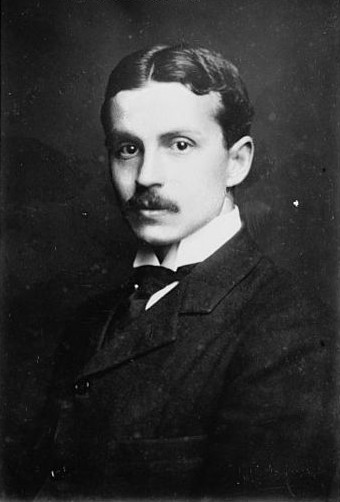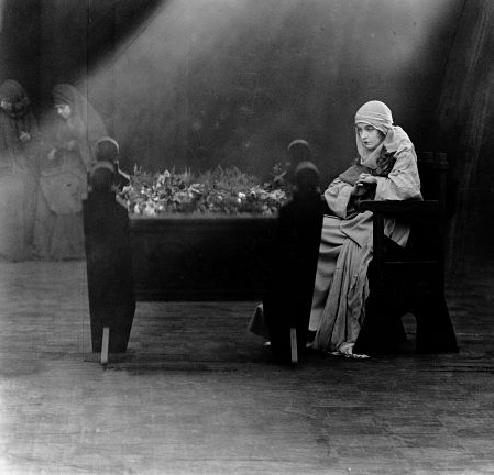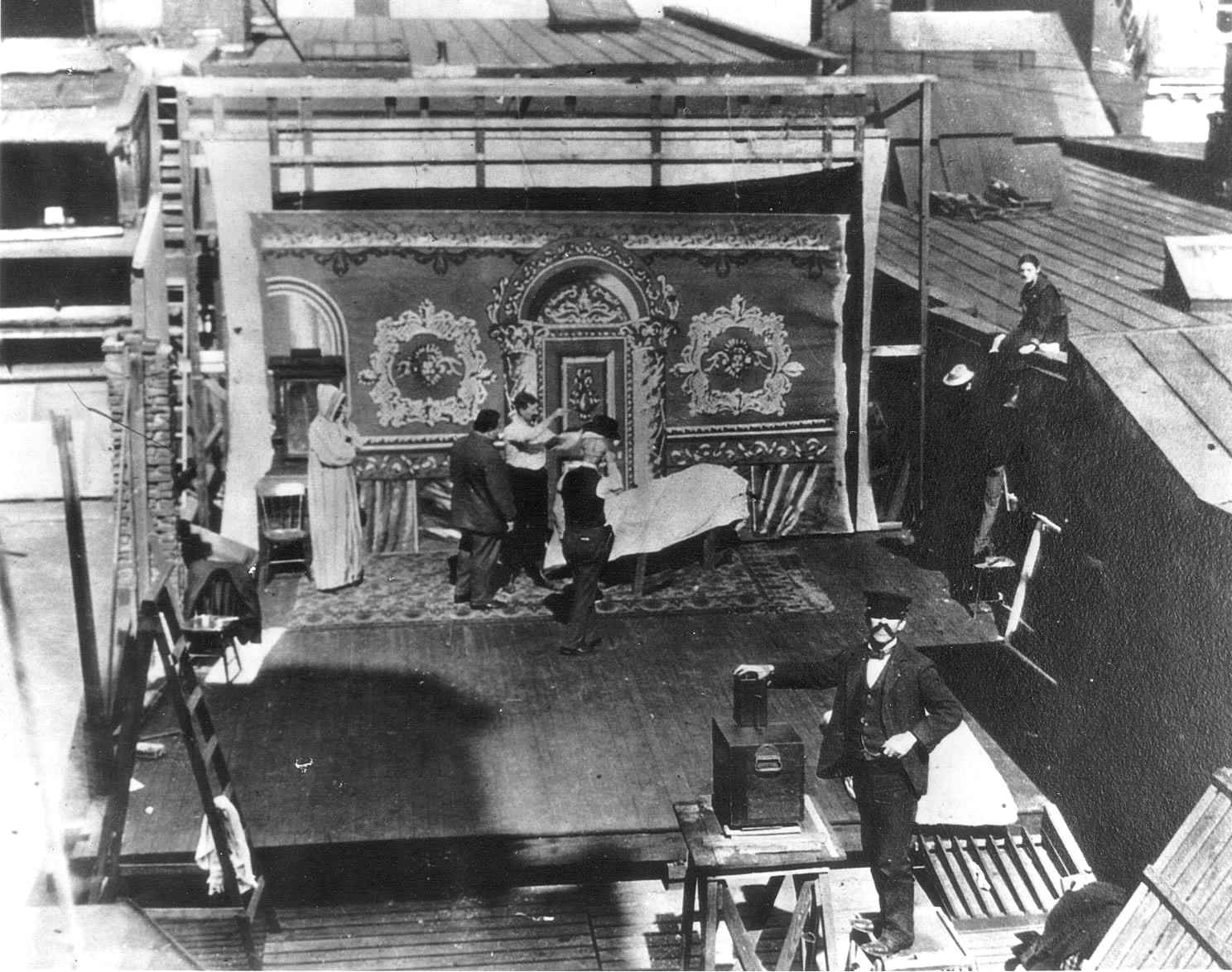|
Anita Loos
Corinne Anita Loos (April 26, 1888 – August 18, 1981) was an American actress, novelist, playwright and screenwriter. In 1912, she became the first female staff screenwriter in Hollywood, when D. W. Griffith put her on the payroll at Triangle Film Corporation. She is best known for her 1925 comic novel, '' Gentlemen Prefer Blondes'', and her 1951 Broadway adaptation of Colette's novella '' Gigi''. Life and career Early life Loos was born in Sisson (now Mount Shasta), California, to Richard Beers Loos and Minerva Ellen "Minnie" (Smith) Loos. She had one sister, Gladys Loos, and one brother, Dr. Harry Clifford Loos, a physician and a co-founder of the Ross-Loos Medical Group. Re pronouncing her name, Loos said, "The family has always used the correct French pronunciation which is ''lohse''. However, I myself pronounce my name as if it were spelled ''luce'', since most people pronounce it that way and it was too much trouble to correct them." Her father founded a tabloid ... [...More Info...] [...Related Items...] OR: [Wikipedia] [Google] [Baidu] |
Mount Shasta, California
Mount Shasta (also known as Mount Shasta City) is a city in Siskiyou County, California, at about above sea level on the flanks of Mount Shasta, a prominent northern California landmark. The city is less than southwest of the summit of its namesake volcano. Its population is 3,223 as of the 2020 census, down from 3,394 from the 2010 census. __TOC__ Commerce and tourism The city of Mount Shasta is located in the Shasta Cascade area of Northern California.Welcome to Mount Shasta Mount Shasta Chamber of Commerce, accessed April 23, 2013 Visitors use the city as a base for in the nearby |
San Diego High School
San Diego High School (SDHS) is an urban public high school located on the southern edge of Balboa Park, in San Diego, California, United States. It is the oldest high school in the San Diego Unified School District, one of the oldest public schools in all of California, and the oldest still on its original site. History Russ High (1882–1907) The school was established in 1882, initially named Russ School after lumberman Joseph Russ, who donated the lumber to build the school. The school was built in the Italian Villa style with a low-hip roof, ironwork parapet, and open-bell tower. It consisted of two stories and eight rooms. It initially served elementary students. In 1888 a high school was added, with three teachers. The high school students took over the upper floor; elementary and primary students occupied the lower floor. The first commencement was held in 1889, with four students graduating. In 1893 high school students took over the entire school, which was renamed Rus ... [...More Info...] [...Related Items...] OR: [Wikipedia] [Google] [Baidu] |
Frank Crowninshield
Francis Welch Crowninshield (June 24, 1872 – December 28, 1947), better known as Frank or Crownie (''informal''), was an American journalist and art and theater critic best known for developing and editing the magazine '' Vanity Fair'' for 21 years, making it a pre-eminent literary journal. Personal life Crowninshield was born June 24, 1872, in Paris, France, to the Americans Frederic Crowninshield (1845–1918) and his wife, the former Helen Suzette Fairbanks, whom he later called "poor but good" members of the well-heeled Boston Brahmin Crowninshield family. His father, a man of "independent means", was a poet and a respected painter of landscape and murals. He served for two years as director of the American Academy in Rome. As an adult, Crowninshield lived in New York City, where he was active in the high-class social life, as well as an associate of rising artists and writers. He was a member of the exclusive Knickerbocker Club and Union Club. He was also a member ... [...More Info...] [...Related Items...] OR: [Wikipedia] [Google] [Baidu] |
Intolerance (film)
''Intolerance'' is a 1916 epic silent film directed by D. W. Griffith. Subtitles include ''Love's Struggle Throughout the Ages'' and ''A Sun-Play of the Ages''.Internet Archive foIntolerance (1916), D. W. Griffith. Retrieved May 21, 2016. Regarded as one of the most influential films of the silent era (though it received mixed reviews at the time), the three-and-a-half-hour epic intercuts four parallel storylines, each separated by several centuries: first, a contemporary melodrama of crime and redemption; second, a Judean story: Christ's mission and death; third, a French story: the events surrounding the St. Bartholomew's Day massacre of 1572; and fourth, a Babylonian story: the fall of the Babylonian Empire to Persia in 539 BC. Each story had its own distinctive color tint in the original print. The scenes are linked by shots of a figure representing Eternal Motherhood, rocking a cradle. Griffith chose to explore the theme of intolerance partly in response to his previous ... [...More Info...] [...Related Items...] OR: [Wikipedia] [Google] [Baidu] |
Intertitle
In films, an intertitle, also known as a title card, is a piece of filmed, printed text edited into the midst of (i.e., ''inter-'') the photographed action at various points. Intertitles used to convey character dialogue are referred to as "dialogue intertitles", and those used to provide related descriptive/narrative material are referred to as "expository intertitles". In modern usage, the terms refer to similar text and logo material inserted at or near the start or end of films and television shows. Silent film era In this era intertitles were mostly called "subtitles" and often had Art Deco motifs. They were a mainstay of silent films once the films became of sufficient length and detail to necessitate dialogue or narration to make sense of the enacted or documented events. ''The British Film Catalogue'' credits the 1898 film ''Our New General Servant'' by Robert W. Paul as the first British film to use intertitles. Film scholar Kamilla Elliott identifies another early use of ... [...More Info...] [...Related Items...] OR: [Wikipedia] [Google] [Baidu] |
Frank E
Frank or Franks may refer to: People * Frank (given name) * Frank (surname) * Franks (surname) * Franks, a medieval Germanic people * Frank, a term in the Muslim world for all western Europeans, particularly during the Crusades - see Farang Currency * Liechtenstein franc or frank, the currency of Liechtenstein since 1920 * Swiss franc or frank, the currency of Switzerland since 1850 * Westphalian frank, currency of the Kingdom of Westphalia between 1808 and 1813 * The currencies of the German-speaking cantons of Switzerland (1803–1814): ** Appenzell frank ** Argovia frank ** Basel frank ** Berne frank ** Fribourg frank ** Glarus frank ** Graubünden frank ** Luzern frank ** Schaffhausen frank ** Schwyz frank ** Solothurn frank ** St. Gallen frank ** Thurgau frank ** Unterwalden frank ** Uri frank ** Zürich frank Places * Frank, Alberta, Canada, an urban community, formerly a village * Franks, Illinois, United States, an unincorporated community * Franks, Missouri, Uni ... [...More Info...] [...Related Items...] OR: [Wikipedia] [Google] [Baidu] |
William Shakespeare
William Shakespeare ( 26 April 1564 – 23 April 1616) was an English playwright, poet and actor. He is widely regarded as the greatest writer in the English language and the world's pre-eminent dramatist. He is often called England's national poet and the " Bard of Avon" (or simply "the Bard"). His extant works, including collaborations, consist of some 39 plays, 154 sonnets, three long narrative poems, and a few other verses, some of uncertain authorship. His plays have been translated into every major living language and are performed more often than those of any other playwright. He remains arguably the most influential writer in the English language, and his works continue to be studied and reinterpreted. Shakespeare was born and raised in Stratford-upon-Avon, Warwickshire. At the age of 18, he married Anne Hathaway, with whom he had three children: Susanna, and twins Hamnet and Judith. Sometime between 1585 and 1592, he began a successful career in London as an ... [...More Info...] [...Related Items...] OR: [Wikipedia] [Google] [Baidu] |
Macbeth
''Macbeth'' (, full title ''The Tragedie of Macbeth'') is a tragedy by William Shakespeare. It is thought to have been first performed in 1606. It dramatises the damaging physical and psychological effects of political ambition on those who seek power. Of all the plays that Shakespeare wrote during the reign of James I, ''Macbeth'' most clearly reflects his relationship with King James, patron of Shakespeare's acting company. It was first published in the Folio of 1623, possibly from a prompt book, and is Shakespeare's shortest tragedy. A brave Scottish general named Macbeth receives a prophecy from a trio of witches that one day he will become King of Scotland. Consumed by ambition and spurred to action by his wife, Macbeth murders King Duncan and takes the Scottish throne for himself. He is then wracked with guilt and paranoia. Forced to commit more and more murders to protect himself from enmity and suspicion, he soon becomes a tyrannical ruler. The bloodbath and ... [...More Info...] [...Related Items...] OR: [Wikipedia] [Google] [Baidu] |
Lubin Manufacturing Company
The Lubin Manufacturing Company was an American motion picture production company that produced silent films from 1896 to 1916. Lubin films were distributed with a Liberty Bell trademark. History The Lubin Manufacturing Company was formed in 1902 and incorporated in 1909 in Philadelphia, Pennsylvania by Siegmund Lubin. The company was the offspring of Lubin's film equipment and film distribution and production business, which began in 1896. Siegmund Lubin, a Jewish immigrant from Poland, was originally an optical and photography expert in Philadelphia but became intrigued with Thomas Edison's motion picture camera and saw the potential in selling similar equipment as well as in making films. Known as "Pop" Lubin, he constructed his own combined camera/projector he called a "Cineograph" and his lower price and marketing know-how brought reasonable success. In 1897 Lubin began making films for commercial release including ''Meet Me at the Fountain'' in 1904. Certain his busines ... [...More Info...] [...Related Items...] OR: [Wikipedia] [Google] [Baidu] |
Biograph Studios
Biograph Studios was an early film studio and laboratory complex, built in 1912 by the Biograph Company at 807 East 175th Street, in The Bronx, New York City, New York. History Early years The first studio of the Biograph Company, formerly American Mutoscope and Biograph Company, was located just south of Union Square on the roof of 841 Broadway at 13th Street in Manhattan, known then as the Hackett Carhart Building and today as the Roosevelt Building. The set-up was similar to Thomas Edison's "Black Maria" in West Orange, New Jersey, being mounted on circular tracks to be able to get the best possible sunlight. As of 1988, the foundations of this machinery were still extant. The company moved in 1906 to a brownstone a few blocks away at 11 East 14th Street, where it remained until 1913. The brownstone was torn down in the 1960s. It was at this location that D. W. Griffith began as a director, and quickly became the studio's focus. Griffith found and developed for the c ... [...More Info...] [...Related Items...] OR: [Wikipedia] [Google] [Baidu] |
Lionel Barrymore
Lionel Barrymore (born Lionel Herbert Blythe; April 28, 1878 – November 15, 1954) was an American actor of stage, screen and radio as well as a film director. He won an Academy Award for Best Actor for his performance in ''A Free Soul'' (1931), and remains best known to modern audiences for the role of villainous Mr. Potter in Frank Capra's 1946 film ''It's a Wonderful Life''. He is also particularly remembered as Ebenezer Scrooge in annual broadcasts of ''A Christmas Carol'' during his last two decades. He is also known for playing Dr. Leonard Gillespie in MGM's nine Dr. Kildare films, a role he reprised in a further six films focusing solely on Gillespie and in a radio series titled ''The Story of Dr. Kildare''. He was a member of the theatrical Barrymore family. Early life Lionel Barrymore was born Lionel Herbert Blythe in Philadelphia, the son of actors Georgiana Drew Barrymore and Maurice Barrymore (born Herbert Arthur Chamberlayne Blythe). He was the elder brother of ... [...More Info...] [...Related Items...] OR: [Wikipedia] [Google] [Baidu] |










